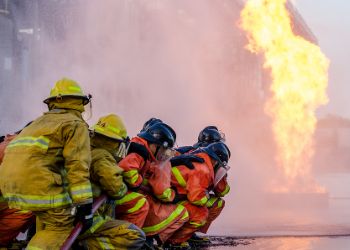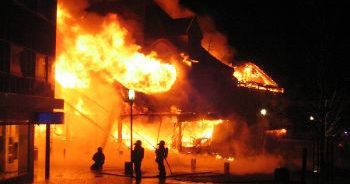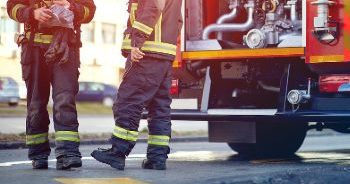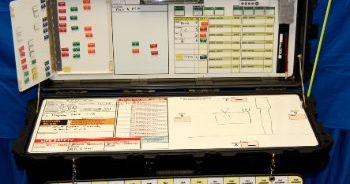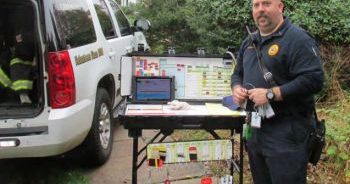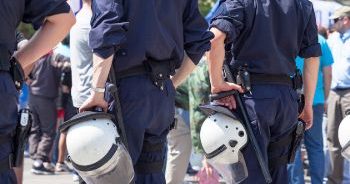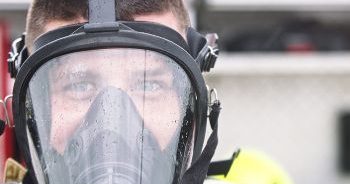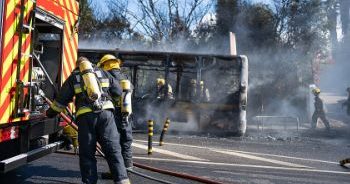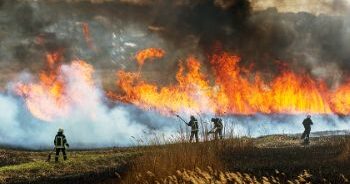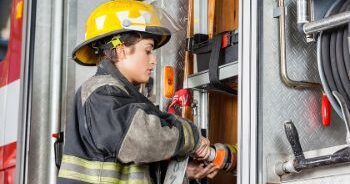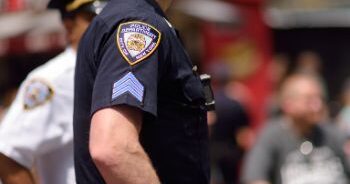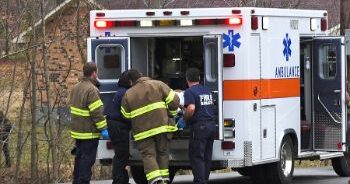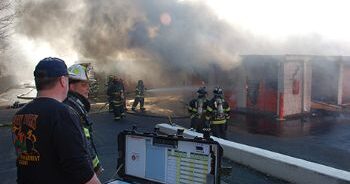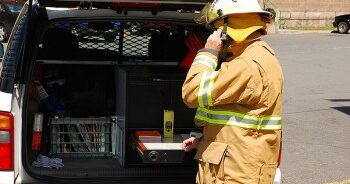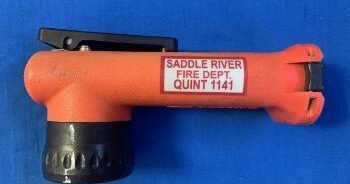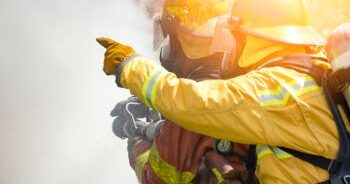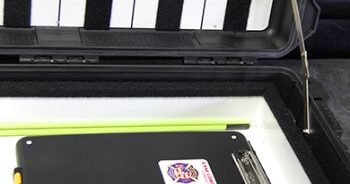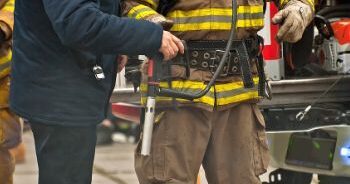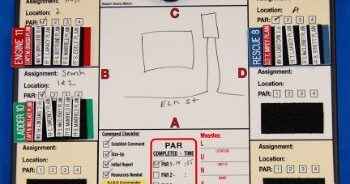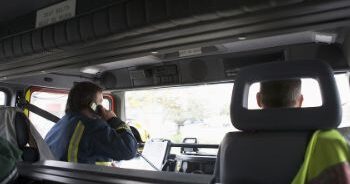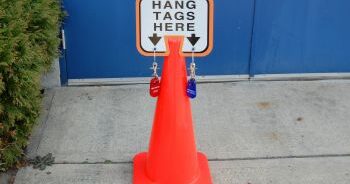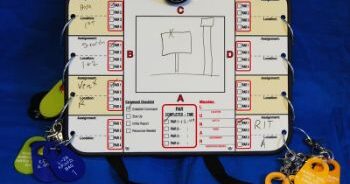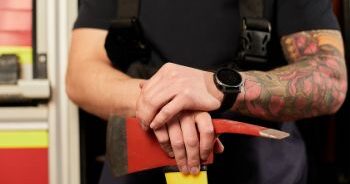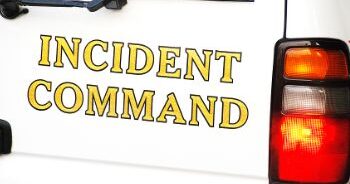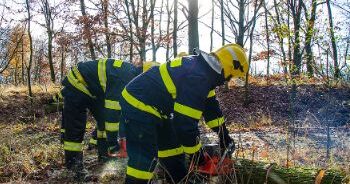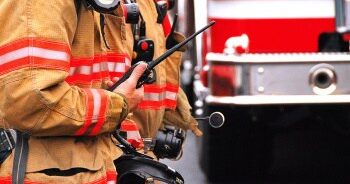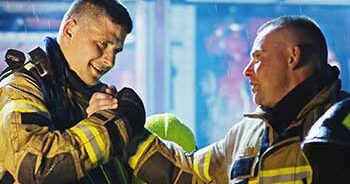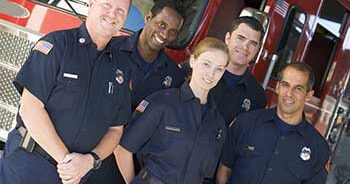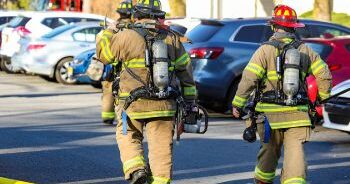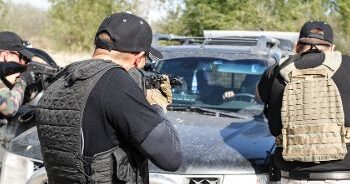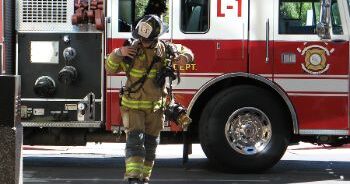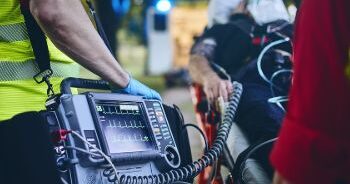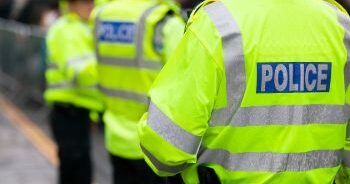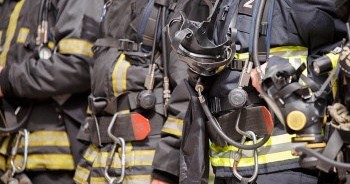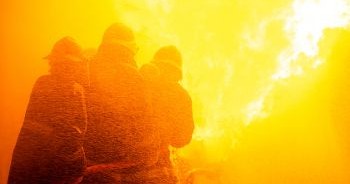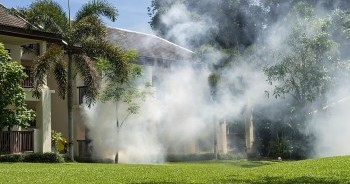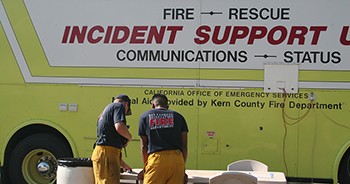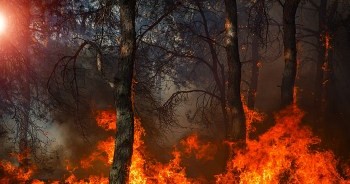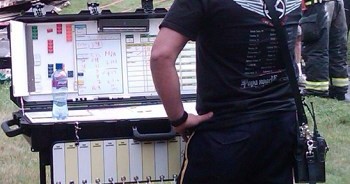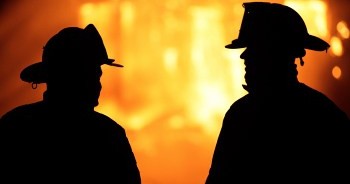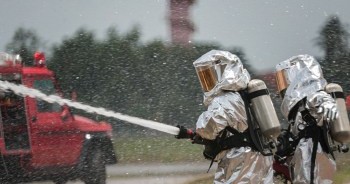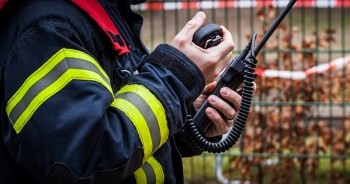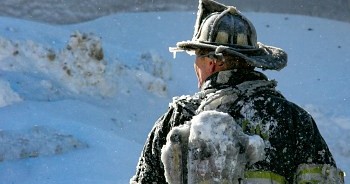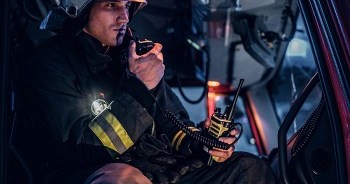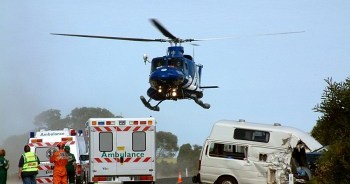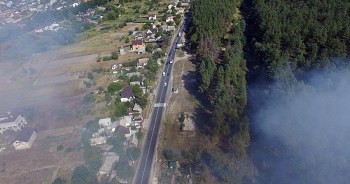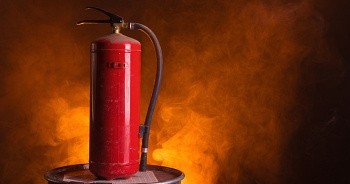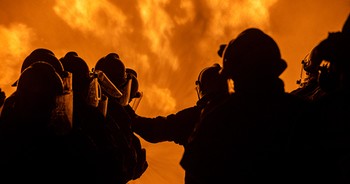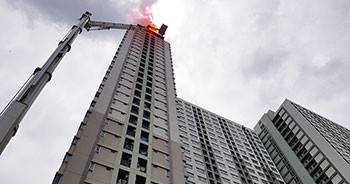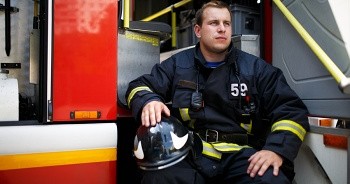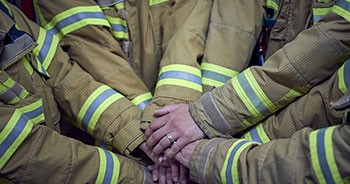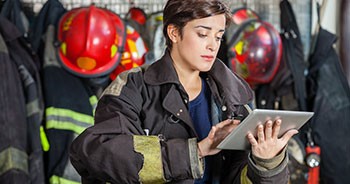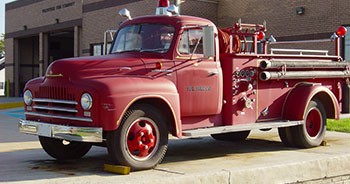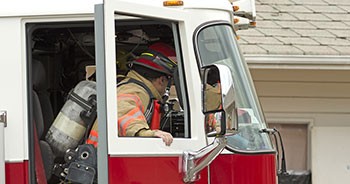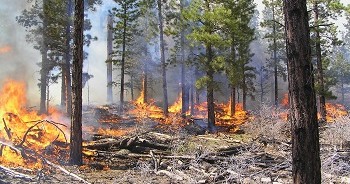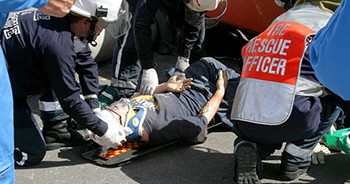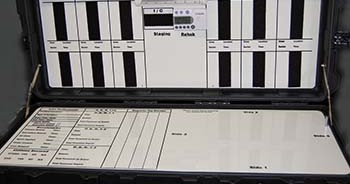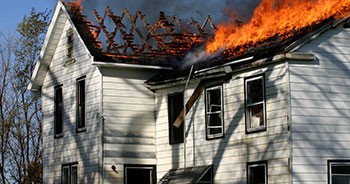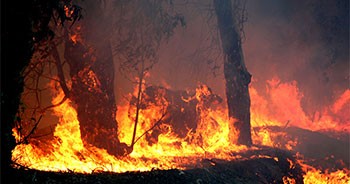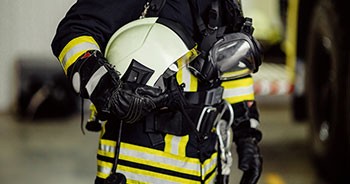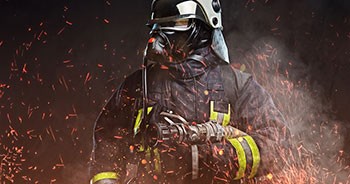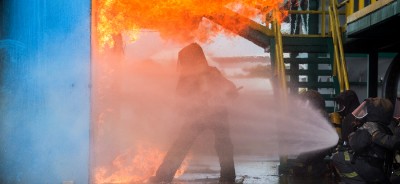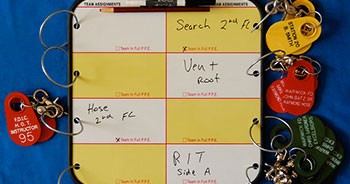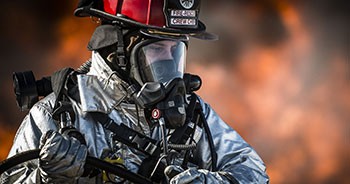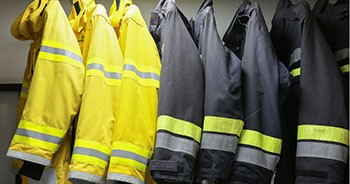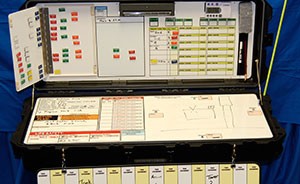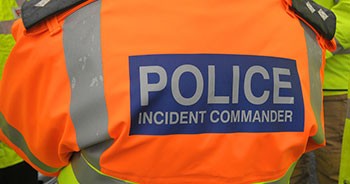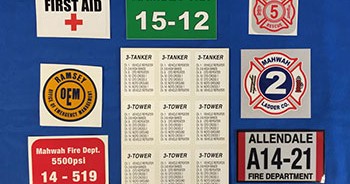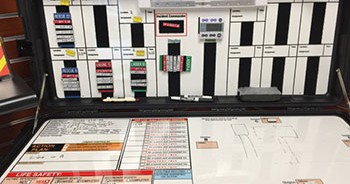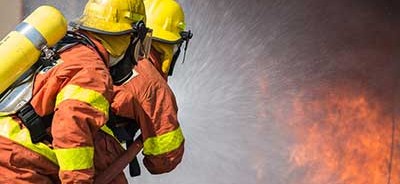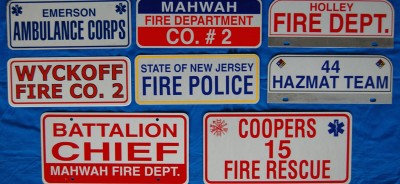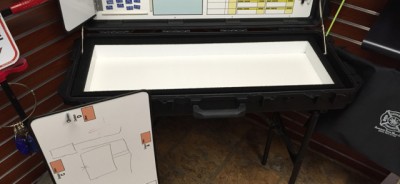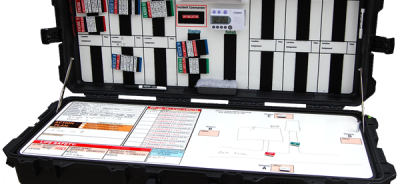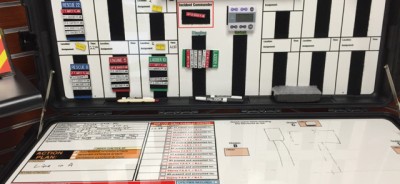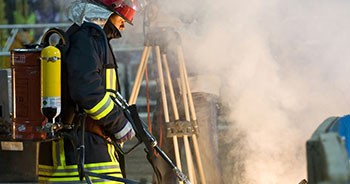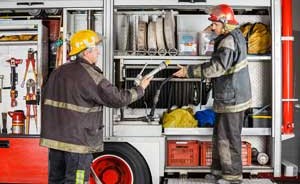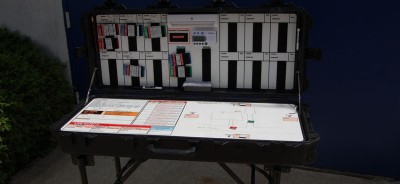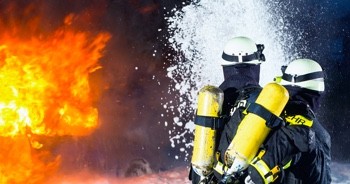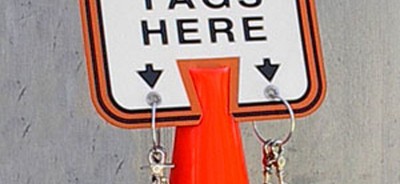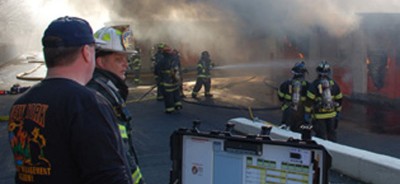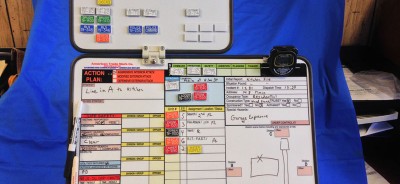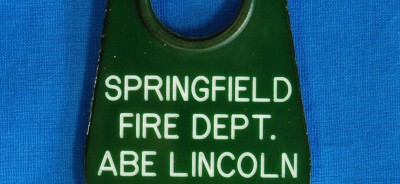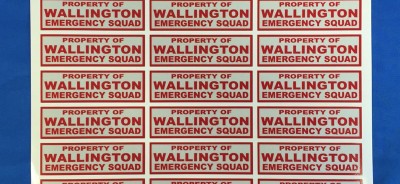Firefighter Safety During An Electrical Fire
Ensuring firefighter safety amidst the challenges posed by electrical fires is a paramount concern for all fire departments across the nation. From understanding electrical fire dynamics to employing effective systems and protocols, we aim to equip firefighting professionals with the knowledge and tools necessary to navigate these high-risk scenarios safely. American Trade Mark is your partner in advancing firefighter safety in the face of electrical fire challenges.
Understanding The Nature Of Electrical Fires
Electrical fires present unique challenges to first responders. They involve electrical hazards that require an expert understanding of electricity, its behavior in various conditions, and the appropriate response practices to contain and suppress the fire without exacerbating the situation.
Safety Protocols During Electrical Fire
- Utilization Of Incident Command Boards: These tools provide a comprehensive view of the operation’s progress, allowing for better coordination and decision-making.
- Usage Of Non-Conductive Tools: Essential when dealing with electrical fires, these tools can prevent accidental electrocutions or the spread of electricity beyond the fire area.
- Proper Insulating Gear: includes firefighter turnout gear designed to protect the wearer from thermal, chemical, and electrical hazards.
- Accountability Tags & Their Collection: when assigned to every firefighter these can help keep track of personnel and allow quick identification in a hectic situation.
Recognizing Electrical Hazards
Electrical fires can involve a diverse range of electrical hazards. It’s crucial to recognize them effectively to apply the right firefighting techniques. These risks primarily include live wires, circuit breakers that have been compromised, and appliances that may still have an electric load despite fire damage.
Detailed Risk Assessment
Risk assessment is a central task within emergency response to an electrical fire. This process helps determine the severity of the situation, the potential dangers to responders, and the optimal strategies for fire suppression. Risk assessment includes checking for dangerous materials, inspecting the integrity of electric installations, and foreseeing possible chain reaction events.
Power Shut Off & Fire Suppression
Shutting down the power is an essential first step during an electrical fire. Once power is cut off, the spread of fire due to electric pathways is minimized, if not eliminated, allowing firefighters to focus on the remaining fire. Firefighters may need to work with utility companies or adequately trained personnel to ensure safe power cutoff. Immediately after, the firefighting strategy should adhere to established protocols for fire suppression.
Dealing With High Voltage & Hazardous Materials
In situations involving high-voltage circuits, electrical substations, and related installations, it becomes more critical for fire responders to wear appropriate protective gear. There may also be hazardous materials in these facilities that pose additional risks in the event of a fire.
Effective Use of Protective Equipment (PPE)
Firefighters’ PPE includes gear that protects against electrical hazards, such as insulated gloves and boots. They also wear flame-resistant garments that do not conduct electricity, significantly reducing the risks when working in an electrical fire situation.
The Role of Training and Preparedness
Regular training is indispensable in enhancing safety during electrical fires. Simulation exercises, knowledge-sharing sessions on updated firefighting techniques, and continuous learning about the evolving nature of electrical devices and systems contribute to firefighters’ preparedness.
Firefighter safety during an electrical fire is a complex subject requiring an in-depth understanding of electrical principles, sophisticated tools, and stringent safety protocols. As safety professionals nationwide grapple with these challenges, American Trade Mark is at the forefront of providing solutions.
Related Posts
Fireground safety is a given priority, but even the most experienced crew may overlook...
Fireground accountability is crucial for maintaining safety and efficiency during emergency operations. Despite rigorous...
In the high-stakes world of EMS, error-free operations are crucial. Sophisticated tools, like EMS...
Magnetic command boards are a practical and flexible tool for organizing search-and-rescue missions. They...
In Emergency Medical Services (EMS), infection control is vital to protecting first responders and...
American Trade Mark Co. is committed to supporting first responders nationwide by providing valuable...
In developing safe and effective responses to gas leaks nationwide, it is critical for...
Preserving a fire scene is important for helping first responders understand and investigate the...
Wildfire smoke poses significant risks to firefighter health, requiring rigorous safety protocols to minimize...
Ensuring firefighter safety through rigorous gear inspection and maintenance is fundamental to any fire...
American Trade Mark offers accountability tags for fire departments and law enforcement agencies nationwide....
In the unpredictable environment of emergency response, ensuring EMS responders' safety in high-risk situations...
Firefighting is a demanding profession that requires precision, quick decision-making, and coordinated efforts to...
Helmet decals are more than a means of identification or decoration for firefighters. These...
The importance of firefighter accountability tags cannot be overstated in the realms of fire...
Firefighting is a challenging profession where every second matters and can be the difference...
Firefighter equipment markers have a crucial role in ensuring fire services' safety and efficiency....
Ensuring firefighter safety in high-risk industrial settings requires strict adherence to safety protocols and...
In the dynamic and demanding world of emergency response, every second counts. It's essential...
As the popularity of food trucks continues to grow, first responders need to have...
Incident command places immense pressure on your leadership team. Rapid decision-making during an emergency...
When emergencies strike, effective incident command strategies save lives. However, methods employed to manage...
Are you looking to improve your communications when deploying your incident command truck in...
Crew-based accountability is essential for firefighters to do their job successfully, and accountability tags...
While training to send and receive mayday calls is part of every firefighter trainee's...
At American Trade Mark, we know just how grueling but rewarding a career in...
According to statistics from the National Institute for Occupational Safety & Health, many of...
During one firefighting incident, just five firefighters responded to a call for help about...
Firefighters often arrive first on the scene of not only fires but national disasters...
Every day, firefighters risk their lives to save people and property, which makes implementing...
A building collapse situation has the potential for serious harm to emergency personnel with...
First Responders should have five functional areas set up within their Incident Command Systems...
American Trade Mark wants to ensure that every hero gets home safely, which is...
At American Trade Mark we know firefighters encounter dangerous conditions on a consistent basis,...
When it's time for a firefighter to retire, how do you say thank you...
Learning key emergency management principles and implementing them within your current incident command systems can help...
Desperate criminals and lives on the line—no one wants to be on the front...
First responders go all out for their communities daily, without any thought of recognition,...
American Trade Mark provides mobile incident command systems to emergency responders nationwide. For EMS...
Locate victims while keeping your first responders as safe as possible with ICS for...
Motor vehicle accidents happen every day. In order to protect first responders like firefighters,...
Police incident command is essential for ensuring the safety of officers and the public....
EMS and paramedics are often the first lines of help on an emergency scene....
Our police officers and other law enforcement personnel often don’t have the luxury of...
COVID-19 has impacted our communities in every way. Surprisingly, however, despite warnings to distance...
During a time of mask-wearing and social distancing are firefighters really at risk? After...
Hotel and resort fires are unique because of the sheer size, height, and number...
Share information quickly and clearly in an emergency. Efficient resource allocation, firefighter safety, and...
Tracking first responders in hoarder home fires is crucial for safety, and at American...
Firefighters put their lives on the line day in and day out, year after...
Bolster your current wildfire fireground communications with incident command systems and tools from American...
At American Trade Mark, we manufacture and distribute custom products and accessories to compliment...
At American Trade Mark, we offer incident command boards for departments of all sizes...
Get, communicate with, and track the people and information you need during your next...
Ensuring effective fireground communications for both firefighters and incident command with strategic planning and...
American Trade Mark is committed to helping keep our first responders nationwide safe and...
Improve fireground communication and firefighter safety with fire department communication tips for bad weather...
At American Trade Mark, we understand that the incident commander and incident safety officer...
Track departments and communicate more efficiently with tools for coordinating emergency response from American...
American Trade Mark knows what it means to develop strategies for EMS safety. Our...
As fires in the wildland-urban interface continue to rise, so do the demands on...
Limit chemical exposure hazards in your firefighters with accountability tags from American Trade Mark....
Improve your firefighter safety and survival rates with these nine tips from American Trade...
Face the uniquely difficult set of challenges involved in high rise firefighter safety with...
We want to help incident commanders find ways to reduce firefighter stress with tips...
As a nationwide provider of firefighter accountability and incident command equipment, American Trade Mark...
Before diving head first into the latest and perceived greatest, at American Trade Mark,...
Incident command and firefighter safety have come a long way since Benjamin Franklin’s 1736...
Don’t get caught off guard on your next emergency response call. At American Trade...
Whether you are on a dedicated woodland fire crew or IC for a structural...
At American Trademark we've put together some high-stress fireground communication tips for when your...
At American Trademark, we understand that to run an effective emergency response team it...
During a time when first responders are being asked to be prepared for more...
Count on EMS command boards from American Trade Mark to promote safety and accountability...
If you're wondering how to keep firefighters safe during defensive firefighting, count on the...
At American Trade Mark, we serve nationwide as a leading manufacturer of wildland fire...
At American Trademark, we want to help you with risk management and firefighter injury...
At American Trademark, we've put together a list of useful tips for accountability officers....
At American Trade Mark Co. our priority is helping you stay safe from common...
At American Trademark, we want to make sure that you are aware of how...
At American Trade Mark, all of our products are made with the safety of...
At American Trade Mark, we can create custom fire department plaques to honor any...
When you’re a firefighter, everyone looks out for everyone else by wearing ID tags—and...
The most important job of the Incident Commander is firefighter scene safety. Communication, organization,...
Equipment accountability is important for first responders which is why American Trade Mark offers accountability...
At American Trade Mark, our magnetic and dry erase command boards can streamline and...
At American Trade Mark, we offer law enforcement incident command boards for police and...
Custom reflective stickers for fire departments are necessary to quickly indicate to crews, safety...
To meet the needs of your specific fire department, at American Trade Mark we...
American Trade Mark specializes in the manufacturing of first responder scene safety products and...
As an industry leader in products dedicated to fire personnel tracking and accountability plan...
At American Trade Mark, we offer an effective range of accountability products geared towards...
American Trade Mark offers custom imprinting for firefighters and other emergency medical services. We’ve...
American Trade Mark offers a way to honor first responders with custom member cards....
American Trade Mark has custom license plates for all types of emergency services. No...
Here at American Trade Mark, we understand that choosing the right command board for...
American Trade Mark provides multiple custom engraving and color options for our accountability tags....
American Trade Mark Co. is a well-known leader in the firefighter accountability system field...
Safeguard your firefighters with a Velcro accountability board offered by American Trade Mark. This...
Explore custom firefighter accountability tags by American Trade Mark Co. The site of a...
If your department is looking for additional funding to ensure your firefighters have all...
American Trade Mark is a leader in firefighter passport accountability systems (PAS) and supporting...
At American Trade Mark we understand the importance of using quality labels for firefighter...
At American Trade Mark, we serve communities by making it possible to keep track...
Enhance your fire department’s personnel accountability system with American Trade Mark Co. accountability tag...
Firefighter tracking systems are a vital part of first responder safety. They help Incident...
Having robust Incident Command Systems saves firefighters’ and EMTs’ lives by promoting personnel accountability...
Protect your firefighters with American Trade Mark Co. custom firefighter accountability tags. Our personnel...
Firefighter status boards are an essential part of managing successful fire ground operations. American...
American Trade Mark Co. is a leading manufacturer of firefighter equipment marker decals. Firefighter...



